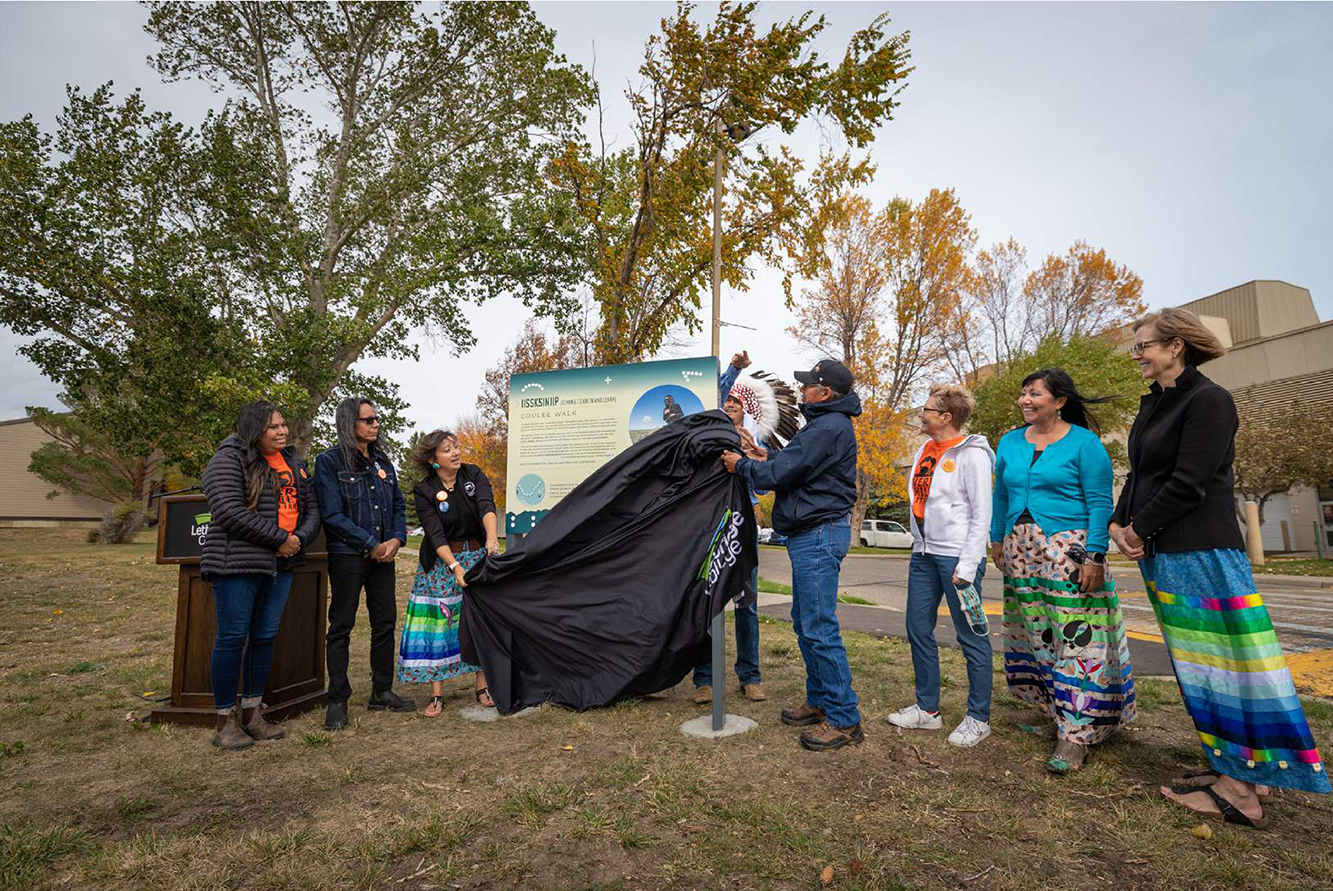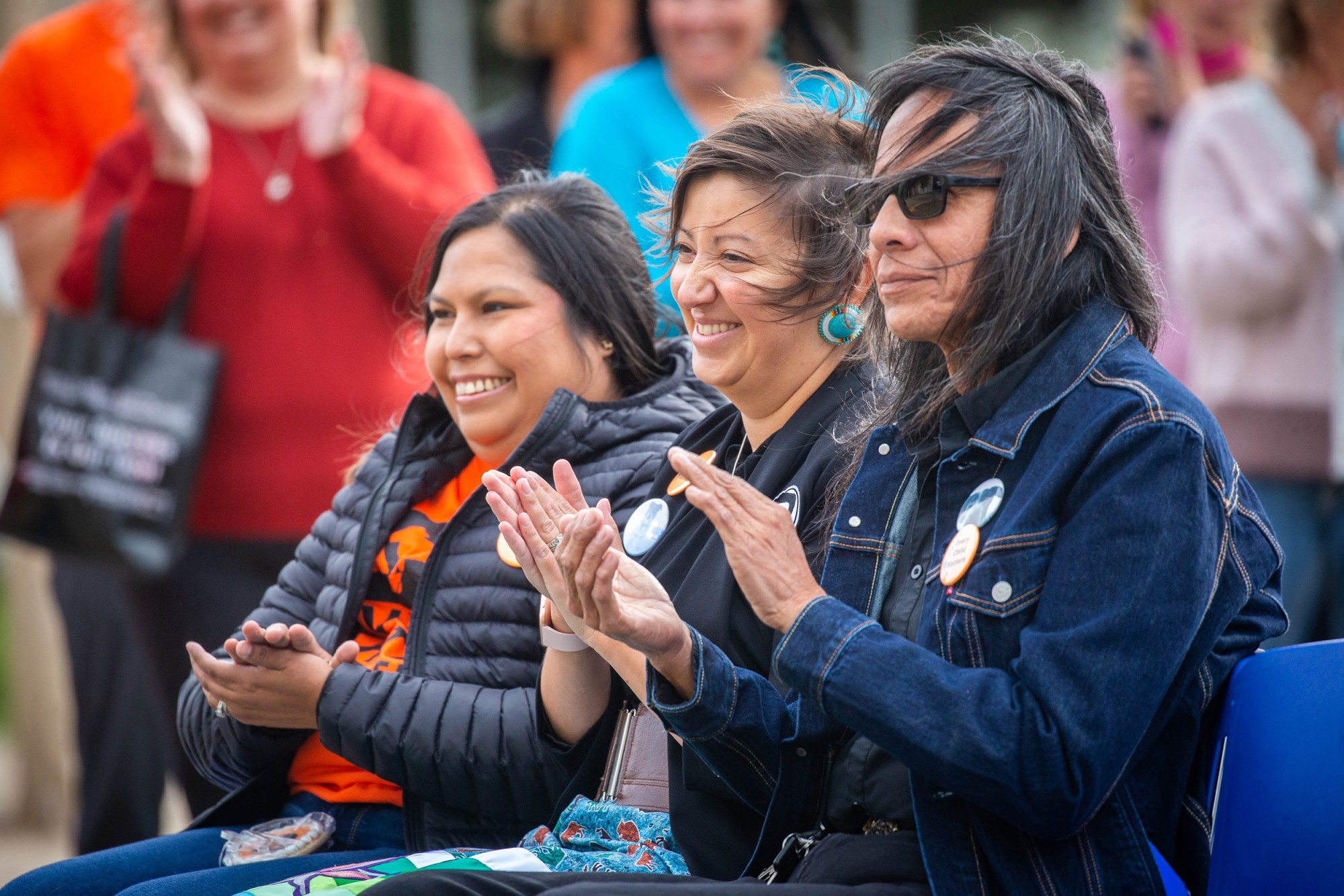 The land where Lethbridge College sits has been home to the Blackfoot people for thousands of years, providing sustenance and spiritual connections for generations. Now, those who walk the coulees surrounding the college’s campus can learn about the importance of the plants native to the area, with the creation of the Iissksiniip (Coming to Know and Learn) Coulee Walk.
The land where Lethbridge College sits has been home to the Blackfoot people for thousands of years, providing sustenance and spiritual connections for generations. Now, those who walk the coulees surrounding the college’s campus can learn about the importance of the plants native to the area, with the creation of the Iissksiniip (Coming to Know and Learn) Coulee Walk.
Unveiled on Tuesday as part of Truth and Reconciliation Week, the Iissksiniip Coulee Walk is an interpretative self-guided tour that explores the traditional plants found in the area, explains their uses and shares some of the traditional creation stories of the Siksikaitsitapi, the Blackfoot Confederacy. The walk was created by traditional Blackfoot plant knowledge keeper and artist William Singer III (Api’soomaahka – Running Coyote) in conjunction with the college’s Indigenous Services team.
 “For this project, it was our vision to build on our collective story of what it means to reside on Blackfoot territory and the importance of sharing a cultural narrative that strengthens our relations and understanding of living in harmony with our Indigenous communities and the land that sustains us all,” says Shanda Webber, manager of Indigenous Services. “We would like to give our heartfelt thanks and admiration to William Singer III who made this vision a reality and allowed the Iissksiniip Coulee Walk to be experienced by so many for future years to come.”
“For this project, it was our vision to build on our collective story of what it means to reside on Blackfoot territory and the importance of sharing a cultural narrative that strengthens our relations and understanding of living in harmony with our Indigenous communities and the land that sustains us all,” says Shanda Webber, manager of Indigenous Services. “We would like to give our heartfelt thanks and admiration to William Singer III who made this vision a reality and allowed the Iissksiniip Coulee Walk to be experienced by so many for future years to come.”
The walk begins on the west side of the Lethbridge College campus, behind the Cullen Residence buildings, and tours around the coulees. Located along a popular walking trail, the Iissksiniip Coulee Walk can be easily accessed by Lethbridge College students, employees and members of the public.
 Those taking the walk are invited to consider their own place on the traditional lands of the Siksikaitsitapi (Blackfoot Confederacy) and to reflect on how shared connections with the plants that grow and waters that flow upon it can bring people together in the spirit of reconciliation.
Those taking the walk are invited to consider their own place on the traditional lands of the Siksikaitsitapi (Blackfoot Confederacy) and to reflect on how shared connections with the plants that grow and waters that flow upon it can bring people together in the spirit of reconciliation.
“The natural world is the foundation of knowledge that connects all life,” says Singer. “You feel it and experience it every time you look at Ksaahkomm (nature, Earth). Our Kaahsinnooniks (grandparents) teach us that we do not own the land, but we are a part of it. It is our role to honour and be stewards of the land, as well as Ksaahkoyi stamohkanainna’ki’pa (respect and care for the environment).”
The Iissksiniip Coulee Walk provides a learning-from-place opportunity that will be offered for years to come to Lethbridge College students and employees to increase their Indigenous cultural competency. Faculty from the School of Environmental Sciences have already brought students to use the walk as part of their studies.
The walk is an extension of the college’s focus on the indigenization of campus spaces, including the permanent raising of the Blackfoot Confederacy Flag, the unveiling of the Ohkotoki’aahkoiyiiniimaan display, the development of Founders’ Square, the renovation of the Niitsitapi Gathering Place and the naming of the Niitsitapi’ksimpstaan learning space.